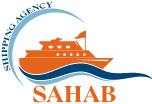Bouri
Port Description
Location: Bouri is located approximately 50nm off the Libyan coast in western Libya, close to the order with Tunisia.
General overview: FSU “Sloug” is oored to the SPM structure by an articulated bracket, water depth approx 166m.
Traffic figures: Approximately 22 vessels handled annually.
Load Line zone: Summer..
Max size: LOA 286m, 35,000 -130,000DWT, beam 44m, no draught restriction.
Pre Arrival Information
ETA’s: Vessel s ETA should be sent to AGIP Oil Tripoli through the agent 72, 48 and 24 hours prior to arrival. 72hrs message should contain the following information.
ETA
Name of vessel and Master’s name
Flag
GT, NT, DWT, LOA and draught
Quantity of cargo required
Information as requested by the operators
Notify any changes 12 hours in advance .
Documentation required: The following documents are required:-
Crew List
Passenger List
Bonded Stores List
Personal and Stores Declaration
Last Port of Call Clearance
International Maritime Health Declaration
Animal Health Declaration
Entering and Departure Territorial Waters Certificate
Report Inward/Outward Certificate
Tanker Certificate
Certificate of Discharge, (signed by authorities of last port loaded in Libya)
Cargo documentation: The following documents are to be delivered onboard by the agent:-
Bill of Lading
Certificate of Origin
Cargo Manifest
Time Sheet
Laboratory Test
Ullage Report
Master’s receipts for samples and documents
Communications: VHF: Ch 16, callsign “Bouri Terminal Sloug”.
Flags: The Libyan National Flag is to be displayed throughout 24 hours, the pilot and International “B” flag are also required.
Regulations and general notices: The Bouri FSU Terminal regulations and information are available upon arrival.
Navigation
Pilot: Pilotage, compulsory for all vessels, is provided by the Mooring Master. The pilot boards 2nm S of FSU “Sloug”, via tug, “Salvatore”.
Anchorages: The waiting area is 2nm S of FSU “Sloug”. Anchorage is strictly forbidden. Tidal range and flow: The prevailing current flows eastward, max 1.5kts, tidal range approx 1.0m.
Dock density: 1025.
Weather: Radial distribution indicates an increase of wind blowing from the NW and a decrease when blowing E-SE. Winds occasionally reach force 8 or more from NW during the winter months.
Charts: BA 3327.
Restrictions: Berthing is in daylight only. Navigation is prohibited within 0.5nm of the line joining the platforms, “DP3” and “DP4”, except under terminal pilot’s supervision. Vessels should proceed to the waiting area 2nm S of the FSU and must not approach any structure closer than 0.5nm.
Tugs: When berth is occupied one tug is secured at aft position, utilising tug lines.
Mooring information: Berthing is normally in tandem. Approx 9.0m of 3in chafe chain is secured to Smit Bracket on FSU poop. The chain is connected to 45m, nylon hawser, 20in circumference, then to a 2nd chafe chain 3in dia x 9.1m. This assembly is heaved on board the export tanker using 600 x 12in polypropylene, pick up line, then secured to forward chain stopper. In the event of side by side berthing, procedures will be provided upon arrival, 10 lines ford and 8 lines aft are usually required.
Berths & Caro
Names/Nos: Bouri oil field contains a number of lighted production platforms and a SPM loading FSU, all of which should be given a berth of at least 0.5nm. A storage tanker is moored to the SPM. Tankers of between 35,000-130,000DWT may load crude oil at the tanker, securing either port side to or astern. 2 x 16 in hoses are used with a loading rate of 9,000tph of Bouri Crude.
Ballast/slop reception: There are no ballast/slop facilities available.
Safety: Check lists are presented by the Mooring Master to be verified and signed by the Master prior to the commencement of vessel operations.
